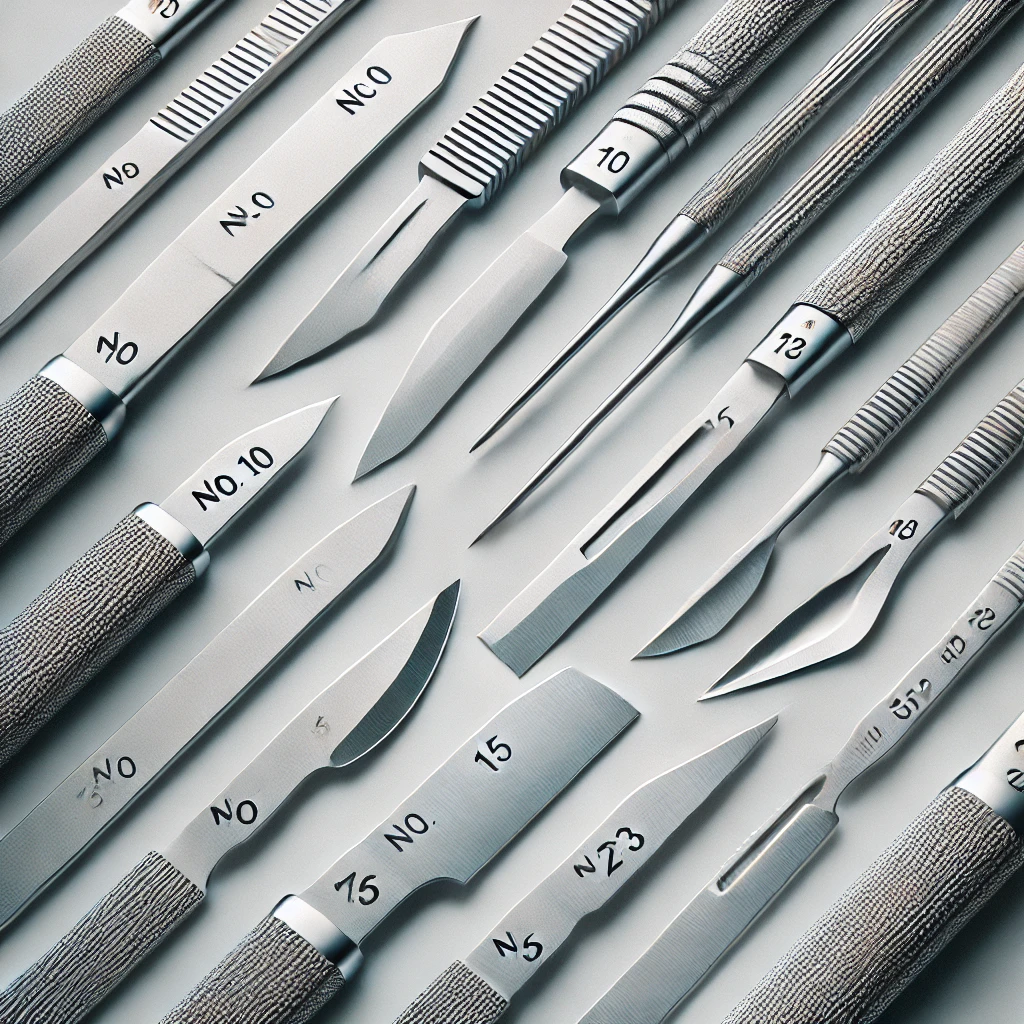Types of surgical blades and their uses
Introduction
The surgical scalpel is one of the main and most widely used tools in the operating room, and its accuracy and quality can directly affect the outcome of the surgery. This small tool, with its various features, is used in a variety of surgeries, from general surgeries to the most specialized heart and brain surgeries. Familiarity with the types of surgical scalpels and their applications is essential not only for surgeons, but also for operating room staff and even medical students. In this article, we intend to comprehensively review the types of surgical scalpels, their applications, and tips related to safety and proper use.

Introduction to types of surgical blades
Surgical blades are generally categorized by the number and type of cutting edge. These numbers indicate the shape and size of the blade, each designed for specific cuts.
1. Surgical blade number 10
This blade is one of the most widely used blades in general surgery due to its large, curved edge. Its primary use is to make long, shallow incisions in the skin and soft tissues. Surgeons often use the No. 10 blade in abdominal surgeries, cesarean sections, and skin surgeries.
Main applications:
- General surgeries
- Skin and plastic surgeries
- Opening large incisions
2. Surgical blade number 11
The #11 blade has a sharp tip and straight edge and is used to make deep, precise cuts. This blade is commonly used in vascular and cardiac surgery and is suitable for small, precise cuts, such as creating openings for draining fluids or inserting tubes.
Main applications:
- Vascular surgery
- Heart surgery
- Making small, deep cuts
3. Surgical blade number 15
The No. 15 blade is ideal for delicate and precise surgeries such as plastic and pediatric surgeries due to its smaller size and short, curved edge. It allows the surgeon great control over small incisions and is often used in facial and hand surgeries.
Main applications:
- Plastic surgery
- Pediatric surgery
- Reconstructive surgeries
4. Surgical blade number 23
The No. 23 blade is larger and stronger than other blades and is used in orthopedic surgery and deeper cuts. This blade is ideal for wide, deep cuts in harder tissues such as muscle and bone due to its long, wide edge.
Main applications:
- Orthopedic surgery
- Major and deep surgeries
- Muscle and bone incisions
Classification of razors by handle type
Surgical blades are usually mounted on different handles, which come in two general types:
- Classic razor handle: For better control in general cuts
- Fine blade handle: for more delicate and sensitive surgeries
Materials used in surgical blades
Surgical blades are made from a variety of materials, but the most common is stainless steel. This material is a good choice for surgical environments because of its high resistance to rust and sterilizability. In some cases, carbon blades are also used, which have greater cutting power but are more susceptible to rust than stainless steel.
Safety tips for using surgical blades
- Use sterile razors: Each razor should be carefully sterilized before use.
- Timely blade replacement: Dull blades should be replaced immediately to prevent tissue damage.
- Disposing of disposable razors: Disposable razors should be disposed of in medical waste containers after use.
- You can read about medical paravan.
- For more information on standards for surgical blades, visit the World Health Organization website.
How to fix a scalpel blade with a handle
It is very important to be careful and safe when attaching the scalpel blade to the handle. First, hold the handle of the blade and use a pair of forceps to remove the blade from the sterile package to prevent direct contact with the blade. Then, place the slotted part of the blade over the groove in the handle. Lock the blade firmly in place by moving it down and forward to prevent it from slipping during surgery. To ensure proper installation, gently shake the blade; if it is fully fixed, it will not move. When removing, use the forceps to pull the blade back and out of the groove in the handle.
Conclusion
Choosing the right surgical blade based on the type of surgery and the patient’s needs plays a vital role in the success of the surgical procedure. By understanding the types of blades and following safety tips, risks can be reduced and surgical precision can be increased. Remember that the right tool will lead the surgeon to better results and reduce post-surgical complications.



دیدگاه خود را به اشتراک بگذارید